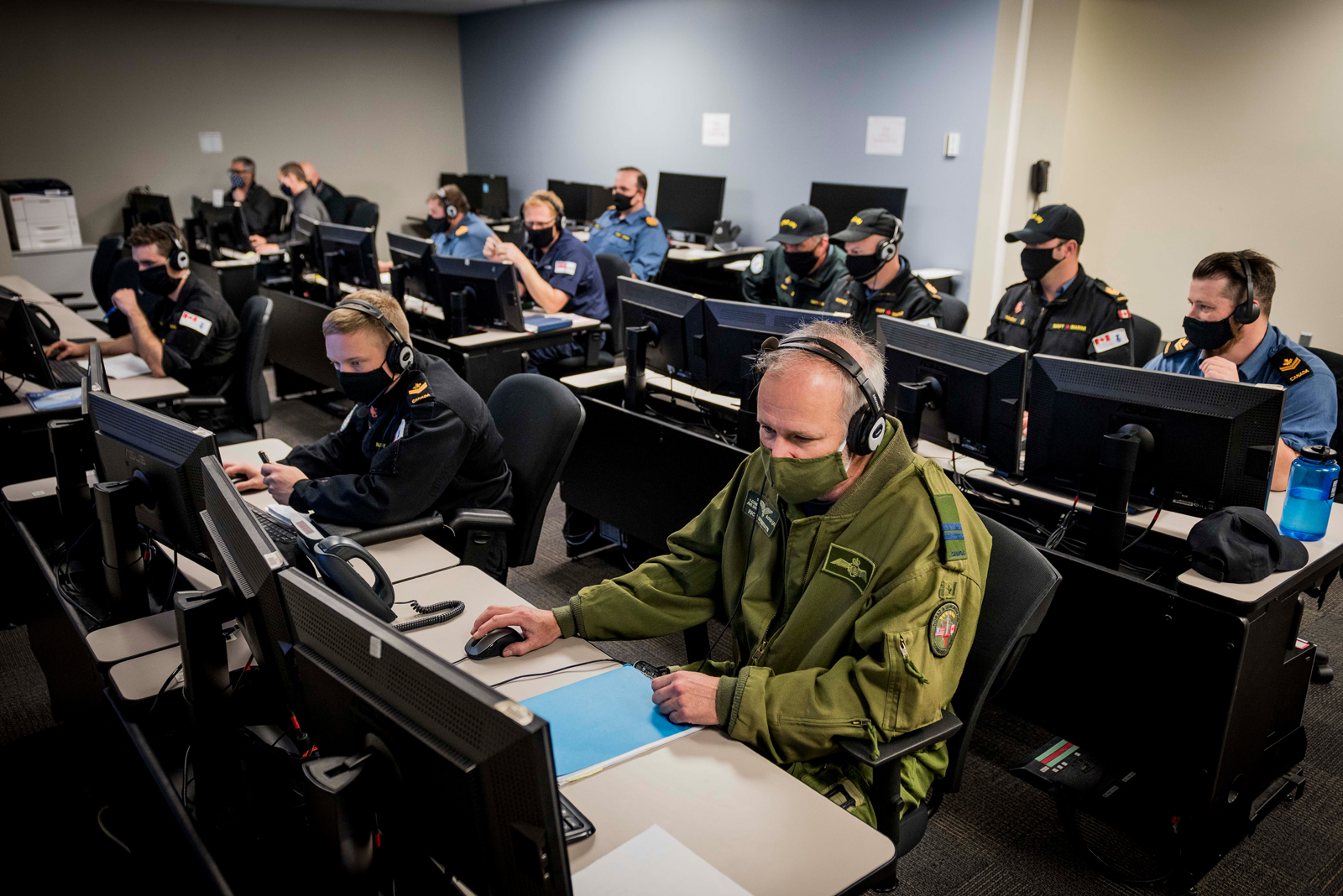Virtual exercise – using all opportunities to train
By Lookout on Nov 20, 2020 with Comments 0
Lt(N) Pete Bigelow
NPTG(A)
––
Working remotely or virtually may be new to many people this year because of the pandemic, but the Canadian Armed Forces and their international Allies have been exercising this capability for years.
Virtual exercising was strengthened recently with Exercise Coalition Virtual Flag (CVF) 21-1. Virtual Flag is an annual United States Air Force-led exercise that ran for nearly two weeks – Oct. 27 to Nov. 5.
While the exercise was hosted at Kirkland AFB in Albuquerque, New Mexico, 3,740 kilometres away from the entrance of building S17 in Halifax, NS, Royal Canadian Navy and Royal Canadian Air Force members did not have to leave their area code to participate.
From the Canadian side, participants were from 14 Wing Greenwood, 12 Wing Shearwater, 8 Wing Trenton, and Naval Training Development Center Atlantic (NTDC(A)).
Overall, there were over 450 joint and coalition war fighters involved, as well as numerous surface and subsurface units. All these war fighters were controlled from 23 sites spanning three continents.
There has been an ever increasing employment of synthetic training within the Canadian Armed Forces and many Allied forces. CVF 21-1 and other virtual exercises allow units to maintain and refine core war fighting capabilities without being hindered by logistics and engineering issues. Participants can obtain the benefits that traditionally have only been afforded by sending ships and aircraft to sea for weeks on end, by simply showing up to a building near their home. It now becomes a regular working day and everyone returns for supper with their loved ones every evening.
Another benefit is there are less moving parts running in the background with synthetic training. On a ship or in an aircraft, things can go wrong and hinder the exercise objectives. With synthetic training, issues can arise but are easily managed by those who run the Distributed Mission Operation Centre.
The value of this kind of exercise is not limited to strengthening the battle rhythm. Virtual task group exercises with Allied countries can mimic real life war fare reaction. All the pieces don’t just magically come together, however; sailors and aircrew still have to prepare as if it was actually occurring in the Pacific Ocean or whatever
theatre is chosen.
Upon the completion of a synthetic training run, participants conduct a post exercise meeting or “hot wash up” and discuss what transpired, lessons learned, and what to expect for the next day’s run. This may not seem overly important but teleconference meetings before and afterwards have the added value of strengthening the personal bond between members of different units and nations. The simple act of conversing allows participants to learn from one another, better understand each other, and ultimately strengthens the ties between Allies.
As technology improves and the need to strengthen ties with fellow NATO nations and beyond becomes more important, synthetic training will continue to expand. The ability to hold more comprehensive virtual exercises with even more participants will allow the navy and the CAF as a whole to effectively focus on shared training and tactics and procedures, enabling Canada and our allies to work even better together in pursuit of common objectives.
––––
Filed Under: Top Stories
About the Author:






